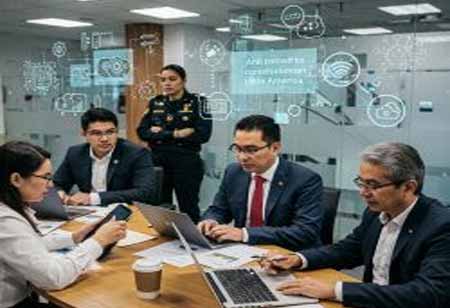THANK YOU FOR SUBSCRIBING
Be first to read the latest tech news, Industry Leader's Insights, and CIO interviews of medium and large enterprises exclusively from Gov CIO Outlook
THANK YOU FOR SUBSCRIBING

By
Government CIO Outlook | Monday, June 24, 2024
Stay ahead of the industry with exclusive feature stories on the top companies, expert insights and the latest news delivered straight to your inbox. Subscribe today.
Advances in mobile technology have made it challenging to distinguish between what is considered physical evidence and what is deemed digital. For instance, smartphones can store significant images directly on the device, access documents stored in cloud services, and retain fingerprints or traces on the hardware itself. This has led to an emerging requirement for law enforcement bodies and corporations to adopt integrated systems that can effectively handle both types of evidence in a unified manner, moving beyond the traditional separate approaches for physical and digital evidence.
Fremont, CA: The importance of digital evidence management in legal and business contexts has led to government bodies frequently issuing recommendations on optimal preservation techniques. The following are 10 top strategies for effective and secure digital evidence management to assist those needing more specialized expertise in this area.
Clear Chain of Custody
Ensure the transfer of all media and digital evidence is meticulously recorded whenever it is passed on, whether between individuals or organizations. Missing information in these records may disqualify the evidence in legal proceedings. Although tracking the chain of custody can be done using paper documents, maintaining a digital log tends to be more dependable and authoritative.
Don’t Change the Power Status
Ensure that devices remain in their initial power status throughout the evidence identification and collection process. Keep devices turned on if they are already on, and do not turn on currently off devices.
Battery-operated devices should be maintained in their original state for as long as feasible. In contrast, devices that require a wired connection, such as desktop computers, will eventually need to be powered down for transportation purposes. In cases involving sensitive investigations, it is advisable to consult forensic specialists before making any changes.
Device Security
Ensure the integrity and security of physical devices and digital information through rigorous physical safeguarding techniques. Do not place the device in easily accessible locations; do so without supervision during maintenance. A weak link in the custody chain can undermine the credibility of evidence in court proceedings.
No Work on Original Data
Data collection sometimes simply entails transferring readable files from storage devices. However, it is common for forensic specialists to gather additional data, known as metadata, from these devices. Metadata provides insight into the condition of files on the device or information about the device itself. Necessary metadata might reveal the methods used to access files, whether commands to shut or delete were made, or if there was an attempt to move files to a different device.
It's crucial not to work directly on the original device to preserve valuable metadata. Experts in data recovery and forensic analysis prioritize making virtual copies of the media for their work to prevent the loss of this information.
Digital Isolation of Device
To safeguard metadata, it's crucial to isolate the device from other storage solutions and avoid connections to Wi-Fi and wired networks.
Occasionally, even staff with good intentions might erase critical metadata by mistake while trying to transfer files with a USB drive in the usual way for examination. Therefore, it's advisable to entrust the task of copying data to experts specialized in forensics.
Monitor Evidence Transactions
Employees must occasionally check out evidence for analysis or legal meetings. Documenting these actions is vital for ensuring an intact chain of custody. This task can be cumbersome for organizations needing a dedicated evidence coordinator. Moreover, even agencies with such personnel cannot guarantee their presence at all hours. Therefore, deploying automated evidence storage solutions could significantly streamline monitoring these activities.
More in News
I agree We use cookies on this website to enhance your user experience. By clicking any link on this page you are giving your consent for us to set cookies. More info

However, if you would like to share the information in this article, you may use the link below:
www.govciooutlookeurope.com/news/tips-to-effectively-manage-your-digital-evidence-nid-2223.html



